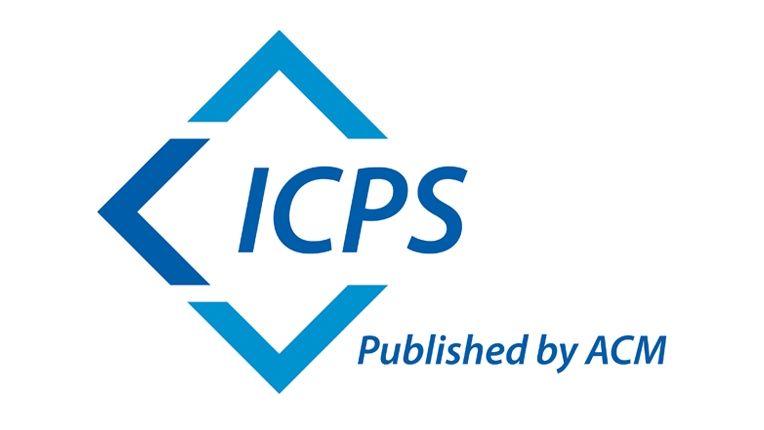 2024年智慧教育与计算机技术国际学术会议(IECT 2024)
2024年智慧教育与计算机技术国际学术会议(IECT 2024)
2024 International Conference on Intelligent Education and Computer Technology
随着近些年计算机科学的发展,不仅改变了我们的生活,也给教育领域带来变革。智慧教育的发展更要依赖于产品和技术的支持。在教育现代化中,新的教育基础设施包括现代化教学场所、规模化网络覆盖、大数据系统和开放性教育资源等软硬件条件,这是教育信息化变革的前提。
2024年智慧教育与计算机技术国际学术会议(IECT 2024)将于2024年6月28日-30日在广西桂林召开。本会议旨在汇集该领域的研究人员、学者和实践者,探讨最新的研究成果和技术创新。会议涵盖了智慧教育、教育信息化、智能学习环境、数据挖掘等多个主题。通过技术创新满足各级教育的技术需求,加速推进智慧教育的发展转型,打造真正能落地的智慧教育新生态。
重要信息
大会官网: www.iciect.org (点击参会/投稿/了解会议详情)
大会时间:2024年6月28日-30日
大会地点:广西·桂林
收录检索:EI、SCOPUS
组织单位
【主办单位】

【联合主办】

【支持单位】
|
|
|
|
|
|
|
|
主讲嘉宾

华云生教授(大会主席)
IEEE Fellow, ACM Fellow, AAAS Fellow 香港中文大学,中国
华云生是香港中文大学的研究教授,也是伊利诺伊大学厄巴纳-香槟分校电气与计算机工程的Franklin W. weltge名誉教授。在此之前,他曾担任香港中文大学教务长和计算机科学与工程韦伦教授,以及美国伊利诺伊大学厄巴纳-香槟分校Franklin W. Woeltge电气与计算机工程特聘教授和协调科学实验室教授。他于1979年在加州大学伯克利分校获得计算机科学博士学位。他曾因其研究和服务贡献获得多项奖项,包括IEEE-CS W. Wallace-McDowell奖(2006年)、IEEE-CS Richard E. Merwin奖(2007年)、IEEE-CS Tsutomu Kanai奖(2009年)、加州大学伯克利分校杰出校友奖(2011年)和香港特区铜紫荆星章(2021年)。主要研究方向为非线性搜索与优化、多媒体技术、人工智能等。他于1988年共同创立了IEEE知识与数据工程学报,并于1993年至1996年担任主编。他是《计算机与教育:人工智能》的主编,《知识与信息系统》的荣誉主编。此外,他还担任过IEEE计算机协会的各种职务,包括出版副主席(1998年和1999年)和主席(2001年)。他是美国科学促进会(AAAS)、ACM和IEEE的会员。

刘帅教授(程序委员主席)
湖南师范大学跨学科研究所,EAI Fellow,中国
刘帅博士,博士生导师。主要研究方向为智能教育技术、教育信息处理等。刘帅教授主持和参与完成多项国家科社基金,在Inf Fus、Inf Sci、IEEE TFS/TMM/TITS/Re、IEEE IOTJ等期刊发表高水平论文80余篇,总被引6000余次。入选2021-2023年世界前2%科学家名单(斯坦福大学),论文被评为2021年中国100篇最具影响力国际期刊论文(中国科学技术信息研究所,2022)等。刘帅教授是EAI Fellow,中国计算机联合会杰出会员,中国电子学会高级会员,CCF教育专委会委员,湖南省计算机学会/人工智能学会理事,湖南省人工智能学会教育工作委员会副主任。

Eric Y.H. TSUI教授
香港理工大学,香港
Eric Y.H. TSUI教授为香港理工大学工业及系统工程系教授,并兼任香港理工大学知识管理及创新研究中心副主任。Eric Y.H. TSUI在自动化知识获取、自然语言处理、基于案例的推理和知识工程与工具方面从事了多年的学术研究,于1989年加入CSC。他的研究得到了Arthur Young、Rank Xerox、CSC、Graphic Directions和澳大利亚研究委员会的资助和奖学金。2000年2月,他还免费访问了微软研究院。2000年8月至2005年1月,他担任CSC亚太区首席研究官以及Australian Mutual Provident(澳大利亚)和Maybank(马来西亚)的创新经理。在CSC任职期间,他为CSC的专家系统产品、应用研究和创新项目做出了重大贡献。Eric Y.H. TSUI教授曾获多项国际知识管理及电子学习奖项,并拥有学士(荣誉)学位、博士学位及工商管理硕士学位。

Rustam Shadiev教授
浙江大学教育学院,IEEE Senior Member
Rustam Shadiev教授于2012年获得国立中央大学网络学习技术博士学位。他目前是中国杭州浙江大学教育学院的终身教授,专门研究语言学习和跨文化教育的先进学习技术。Shadiev教授是英国计算机学会会员,也是电气和电子工程师学会(IEEE)的高级会员。2019年被授予江苏省杰出教授称号。此外,从2020年到2023年,他连续四年被Elsevier、Scopus和Shanghai Rating评为中国教育领域被引用最多的研究者之一。
研究领域:先进的学习技术、语音到文本识别技术、计算机辅助翻译、多媒体学习系统、多点触摸技术、跨文化教育与语言学习、移动辅助学习、开放和远程学习等。

方旭教授
南通大学,中国
方旭,南通大学教育科学学院副教授,硕士生导师,从事教育数字化、人工智能教育等方面的研究工作。在国内外刊物上发表学术论文60余篇,其中包括以第一作者发表SSCI来源期刊1篇、CSSCI来源期刊15篇,在《科学出版社》、《人民出版社》、《中国社会科学出版社》、《吉林大学出版社》等出版学术专著6部。已主持国家社科基金一般项目、国家教育考试科研规划课题重点课题、教育部在线教育基金、江苏省社科基金,河南省社科基金、河南省重点研发与推广计划(软科学课题)、甘肃省社科基金等二十余项。获得河南省教育科学规划优秀科研成果奖一等奖、甘肃高校科研优秀成果二等奖等各类奖项11项。现为《开放教育研究》、《现代远程教育研究》、《远程教育杂志》、《Current Psychology》等多本CSSCI与SSCI来源期刊审稿人。

贾积有教授
北京大学,中国
贾积有教授,北京大学教育学院教育技术系主任、教授、博士生导师;北京大学教育信息化国际研究中心主任。
研究领域:教育技术学、人工智能教育应用、计算机辅助语言教学、教育决策支持系统等。

MICHAEL AGYEMANG ADARKWAH博士后研究员
北京师范大学—智能学习学院,中国
教育与文化研究所/成人教育主席
Michael Agyemang Adarkwah,德国耶拿弗里德里希席勒大学教育与文化研究所研究员(博士后)、成人教育主席。曾任北京师范大学智能学习研究院博士后研究员。他在中国西南大学获得教育领导与管理博士学位。他拥有护理学士学位,曾在加纳担任注册Hushi(RGN)。他曾在朴次茅斯大学-卡普兰研讨会和加纳大学就高等教育中的人工智能发表主题演讲。主要研究方向为教与学、动机、评估、数字化、计算机与教育、成人教育、特殊教育、语言学和医疗保健教育。他编辑了三本关于教育设计、教育机器人和教育中的人工智能(AIED)的斯普林格书籍。他是《教育研究与多学科方法杂志》(JESMA)、《国际现代教育研究杂志》(IJONMES)和《社会教育研究》(SER)的编委会成员。他曾担任《国际智能技术与学习杂志》的客座编辑。他是SN社会科学的副主编。
征文主题(包含但不限于)
| 智慧教育 | 计算机科学 | ||
| 互联网+教育 | 智能学习环境 | 数据挖掘 | 智能控制 |
| 远程教育 | 数字化测评 | 虚拟现实 | 计算机辅助教学 |
| 主动学习 | 多媒体教学 | 模糊逻辑 | 人工智能与开放式学习 |
| 学习模型 | 教育机器人 | 软计算 | 电子学习平台和工具 |
| 在线/虚拟实验室 | 教育数字化转型 | 云计算 | 信息技术与学科教学 |
| 教育数据挖掘 | 教育技术系统的模型与构架 | 人机交互 | 语音与自然语言处理 |
| 移动学习 | 远程教育教学 | 智能化、知识化系统 | 信息检索与融合 |
| 教育信息化 | STEM教育 | 网络智能应用与搜索 | 智能规划与调度 |
| 网络学习 | |||
投稿须知(请勿一稿多投)
1.大会官方语言为英语,论文必须是英文稿件;
2.发表论文的作者需提交全文,论文不得少于8页;
3. 论文应具有学术或实用价值,未在国内外学术期刊或会议发表过;
4. 论文须得按照会议模板进行排版;
5.会议仅接受全英稿件;
6.参考文献必须有3个及以上的国外作家;
7.一篇论文只能有一位通讯作者;
8.论文应具有学术或实用价值,未在国内外学术期刊或会议发表过,作者可通过CrossCheck, Turnitin或其他查询系统自费查重,重复率需要低于30%,否则由文章重复率引起的被拒稿将由作者自行承担责任。
出版信息

所有的投稿都必须经过2-3位组委会专家审稿,经过严格的审稿之后,提交ACM International Conference Proceedings Series(ISSN:979-8-4007-0992-0)出版,最终所有录用的论文提交EI、Scopus检索。
*预计递交出版社后2-3个月见刊,见刊后1-2个月检索。
参会方式
主讲嘉宾:申请主题演讲,由组委会审核。
口头报告:论文一经录用即可注册参会发表口头报告,时间为15分钟,含问答环节。无投稿亦可报名申请。
海报展示:论文一经录用即可注册参会进行海报展示,海报尺寸为A1。无投稿亦可报名申请。
听众参会:无需提交稿件,直接注册听众参会即可。


























 359
359











 被折叠的 条评论
为什么被折叠?
被折叠的 条评论
为什么被折叠?








